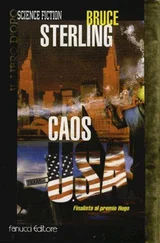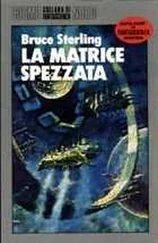Bruce Sterling - Essays. FSF Columns
Здесь есть возможность читать онлайн «Bruce Sterling - Essays. FSF Columns» весь текст электронной книги совершенно бесплатно (целиком полную версию без сокращений). В некоторых случаях можно слушать аудио, скачать через торрент в формате fb2 и присутствует краткое содержание. Жанр: Фантастика и фэнтези, на английском языке. Описание произведения, (предисловие) а так же отзывы посетителей доступны на портале библиотеки ЛибКат.
- Название:Essays. FSF Columns
- Автор:
- Жанр:
- Год:неизвестен
- ISBN:нет данных
- Рейтинг книги:3 / 5. Голосов: 1
-
Избранное:Добавить в избранное
- Отзывы:
-
Ваша оценка:
- 60
- 1
- 2
- 3
- 4
- 5
Essays. FSF Columns: краткое содержание, описание и аннотация
Предлагаем к чтению аннотацию, описание, краткое содержание или предисловие (зависит от того, что написал сам автор книги «Essays. FSF Columns»). Если вы не нашли необходимую информацию о книге — напишите в комментариях, мы постараемся отыскать её.
Essays. FSF Columns — читать онлайн бесплатно полную книгу (весь текст) целиком
Ниже представлен текст книги, разбитый по страницам. Система сохранения места последней прочитанной страницы, позволяет с удобством читать онлайн бесплатно книгу «Essays. FSF Columns», без необходимости каждый раз заново искать на чём Вы остановились. Поставьте закладку, и сможете в любой момент перейти на страницу, на которой закончили чтение.
Интервал:
Закладка:
thoroughly, so that it will wet the entire surface of the substrate.
Good wetting is a key to strong adhesive bonds; bad wetting leads
to problems like "starved joints," and crannies full of trapped air,
moisture, or other atmospheric contaminants, which can weaken the
bond.
But it is not enough just to wet a surface thoroughly; if that
were the case, then water would be a glue. Liquid glue changes
form; it cures, creating a solid interface between surfaces that
becomes a permanent bond.
The exact nature of that bond is pretty much anybody's guess.
There are no less than four major physico-chemical theories about
what makes things stick: mechanical theory, adsorption theory,
electrostatic theory and diffusion theory. Perhaps molecular strands
of glue become physically tangled and hooked around irregularities
in the surface, seeping into microscopic pores and cracks. Or, glue
molecules may be attracted by covalent bonds, or acid-base
interactions, or exotic van der Waals forces and London dispersion
forces, which have to do with arcane dipolar resonances between
magnetically imbalanced molecules. Diffusion theorists favor the
idea that glue actually blends into the top few hundred molecules of
the contact surface.
Different glues and different substrates have very different
chemical constituents. It's likely that all of these processes may have
something to do with the nature of what we call "stickiness" -- that
everybody's right, only in different ways and under different
circumstances.
In 1989 the National Science Foundation formally established
the Center for Polymeric Adhesives and Composites. This Center's
charter is to establish "a coherent philosophy and systematic
methodology for the creation of new and advanced polymeric
adhesives" -- in other words, to bring genuine detailed scientific
understanding to a process hitherto dominated by industrial rules of
thumb. The Center has been inventing new adhesion test methods
involving vacuum ovens, interferometers, and infrared microscopes,
and is establishing computer models of the adhesion process. The
Center's corporate sponsors -- Amoco, Boeing, DuPont, Exxon,
Hoechst Celanese, IBM, Monsanto, Philips, and Shell, to name a few of
them -- are wishing them all the best.
We can study the basics of glue through examining one typical
candidate. Let's examine one well-known superstar of modern
adhesion: that wondrous and well-nigh legendary substance known
as "superglue." Superglue, which also travels under the aliases of
SuperBonder, Permabond, Pronto, Black Max, Alpha Ace, Krazy Glue
and (in Mexico) Kola Loka, is known to chemists as cyanoacrylate
(C5H5NO2).
Cyanoacrylate was first discovered in 1942 in a search for
materials to make clear plastic gunsights for the second world war.
The American researchers quickly rejected cyanoacrylate because
the wretched stuff stuck to everything and made a horrible mess. In
1951, cyanoacrylate was rediscovered by Eastman Kodak researchers
Harry Coover and Fred Joyner, who ruined a perfectly useful
refractometer with it -- and then recognized its true potential.
Cyanoacrylate became known as Eastman compound #910. Eastman
910 first captured the popular imagination in 1958, when Dr Coover
appeared on the "I've Got a Secret" TV game show and lifted host
Gary Moore off the floor with a single drop of the stuff.
This stunt still makes very good television and cyanoacrylate
now has a yearly commercial market of $325 million.
Cyanoacrylate is an especially lovely and appealing glue,
because it is (relatively) nontoxic, very fast-acting, extremely strong,
needs no other mixer or catalyst, sticks with a gentle touch, and does
not require any fancy industrial gizmos such as ovens, presses, vices,
clamps, or autoclaves. Actually, cyanoacrylate does require a
chemical trigger to cause it to set, but with amazing convenience, that
trigger is the hydroxyl ions in common water. And under natural
atmospheric conditions, a thin layer of water is naturally present on
almost any surface one might want to glue.
Cyanoacrylate is a "thermosetting adhesive," which means that
(unlike sealing wax, pitch, and other "hot melt" adhesives) it cannot
be heated and softened repeatedly. As it cures and sets,
cyanoacrylate becomes permanently crosslinked, forming a tough
and permanent polymer plastic.
In its natural state in its native Superglue tube from the
convenience store, a molecule of cyanoacrylate looks something like
this:
CN
/
CH2=C
\
COOR
The R is a variable (an "alkyl group") which slightly changes
the character of the molecule; cyanoacrylate is commercially
available in ethyl, methyl, isopropyl, allyl, butyl, isobutyl,
methoxyethyl, and ethoxyethyl cyanoacrylate esters. These
chemical variants have slightly different setting properties and
degrees of gooiness.
After setting or "ionic polymerization," however, Superglue
looks something like this:
CN CN CN
| | |
- CH2C -(CH2C)-(CH2C)- (etc. etc. etc)
| | |
COOR COOR COOR
The single cyanoacrylate "monomer" joins up like a series of
plastic popper-beads, becoming a long chain. Within the thickening
liquid glue, these growing chains whip about through Brownian
motion, a process technically known as "reptation," named after the
crawling of snakes. As the reptating molecules thrash, then wriggle,
then finally merely twitch, the once- thin and viscous liquid becomes
a tough mass of fossilized, interpenetrating plastic molecular
spaghetti.
And it is strong. Even pure cyanoacrylate can lift a ton with a
single square-inch bond, and one advanced elastomer-modified '80s
mix, "Black Max" from Loctite Corporation, can go up to 3,100 pounds.
This is enough strength to rip the surface right off most substrates.
Unless it's made of chrome steel, the object you're gluing will likely
give up the ghost well before a properly anchored layer of Superglue
will.
Superglue quickly found industrial uses in automotive trim,
phonograph needle cartridges, video cassettes, transformer
laminations, circuit boards, and sporting goods. But early superglues
had definite drawbacks. The stuff dispersed so easily that it
sometimes precipitated as vapor, forming a white film on surfaces
where it wasn't needed; this is known as "blooming." Though
extremely strong under tension, superglue was not very good at
sudden lateral shocks or "shear forces," which could cause the glue-
bond to snap. Moisture weakened it, especially on metal-to-metal
bonds, and prolonged exposure to heat would cook all the strength
out of it.
The stuff also coagulated inside the tube with annoying speed,
turning into a useless and frustrating plastic lump that no amount of
squeezing of pinpoking could budge -- until the tube burst and and
the thin slippery gush cemented one's fingers, hair, and desk in a
mummified membrane that only acetone could cut.
Today, however, through a quiet process of incremental
improvement, superglue has become more potent and more useful
than ever. Modern superglues are packaged with stabilizers and
thickeners and catalysts and gels, improving heat capacity, reducing
brittleness, improving resistance to damp and acids and alkalis.
Today the wicked stuff is basically getting into everything.
Including people. In Europe, superglue is routinely used in
Читать дальшеИнтервал:
Закладка:
Похожие книги на «Essays. FSF Columns»
Представляем Вашему вниманию похожие книги на «Essays. FSF Columns» списком для выбора. Мы отобрали схожую по названию и смыслу литературу в надежде предоставить читателям больше вариантов отыскать новые, интересные, ещё непрочитанные произведения.
Обсуждение, отзывы о книге «Essays. FSF Columns» и просто собственные мнения читателей. Оставьте ваши комментарии, напишите, что Вы думаете о произведении, его смысле или главных героях. Укажите что конкретно понравилось, а что нет, и почему Вы так считаете.



